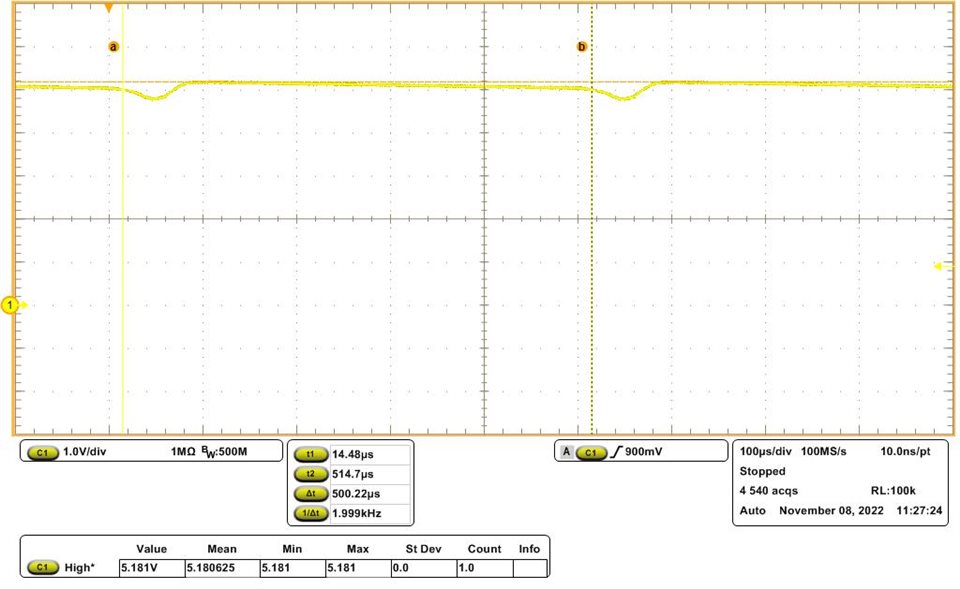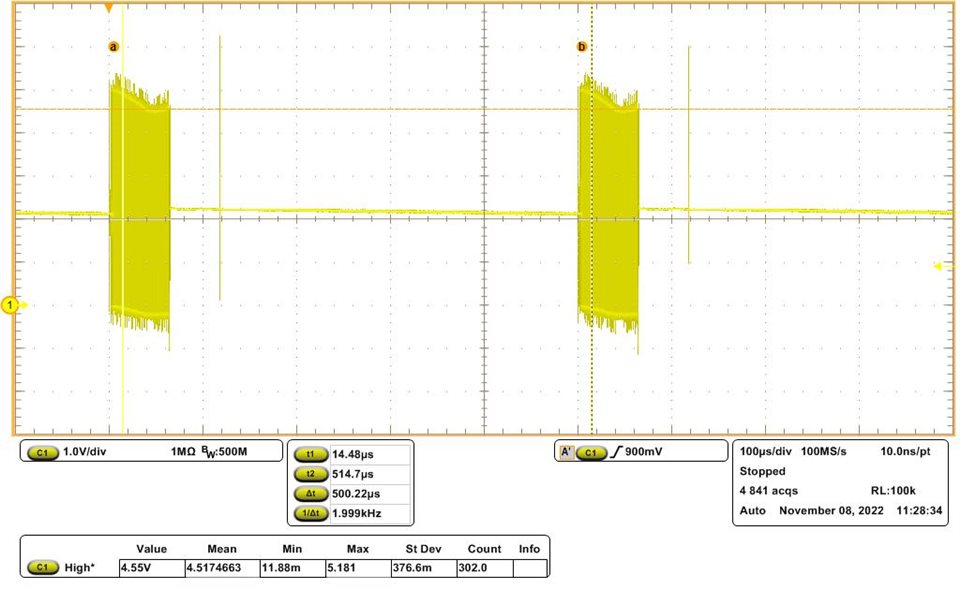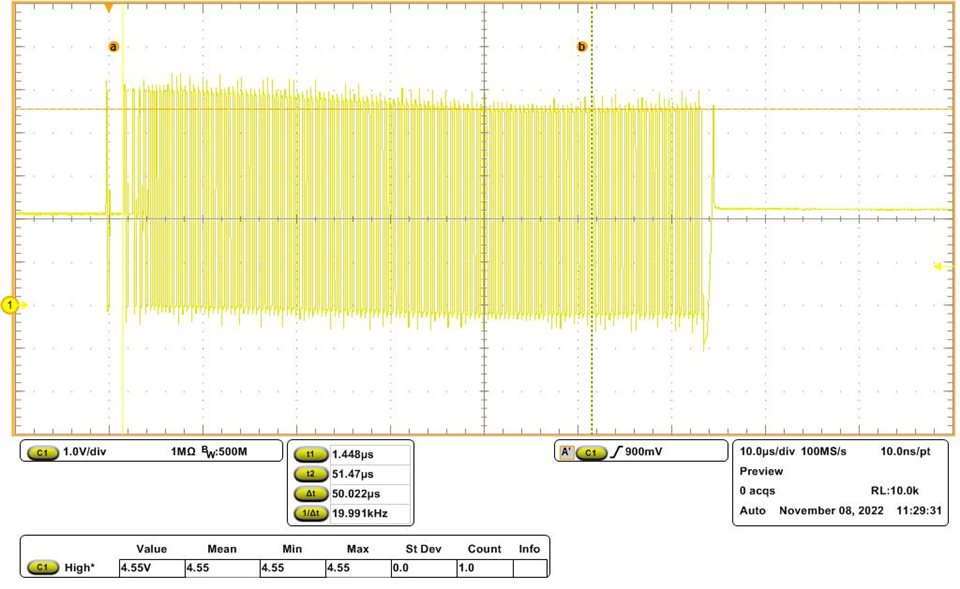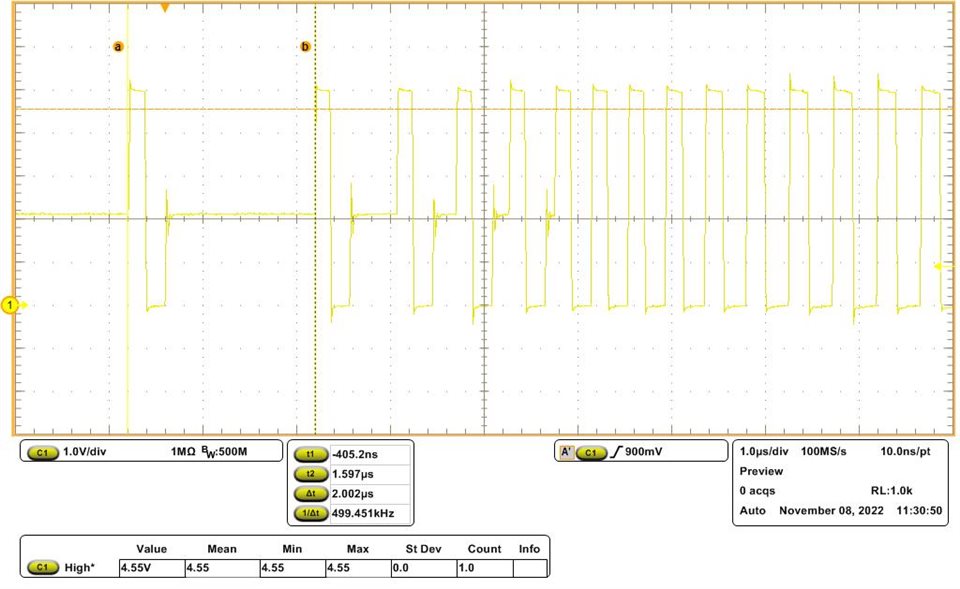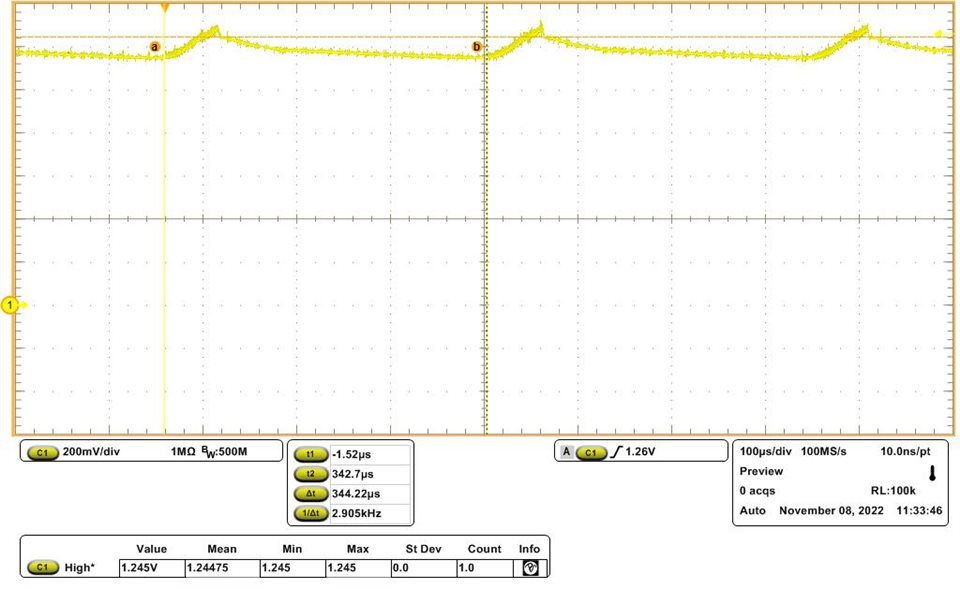Other Parts Discussed in Thread: TPS62A02, TPS62823, TPS62822
Dear Mister or Madam,
we use the TPS62A01 in order to generate 3,3V from 5V as seen in the following schematic.
Equivalent schematics work for 1V and 1,8V voltage generation.
For the 3,3V output, this part enters Hiccup process, remains into it and doesn't deliver the desired voltage.
Entering the Hiccup process is supposed to mean an over current protection.
In our case, the inductor is as specified 1uH, the nominal current is less than 100mA and the total capacitors on the 3,3V (VCC3V3) power rail is about 200uF incl. the 47uF placed after the inductor.
We noticed the following:
- the Hiccup period is not 100us as written in the datasheet but 500us.
- if we increase the feedback capacitor to 2,2nF instead of 120pF the 3,3V are generated but for loads not exceeding 250mA.
- reducing the values of the feedback resistors (10k instead of 100k and 2k2 instead of 22k1) or the output capacitor (10uF instead of 47uF) doesn't help.
Can you please help us regarding to this system instability?
Thank you in advance.
Kind Regards.
Cédric




